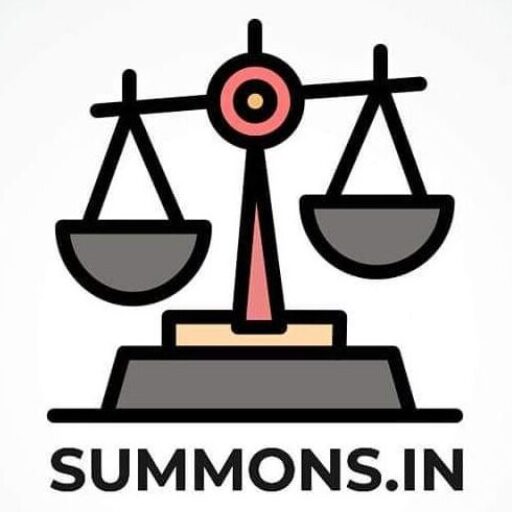
PhonePe v. BundlePe Innovations Pvt. Ltd. (Judgment Dated 21/01/2025)
The case of PhonePe Private Limited v. BundlePe Innovations Pvt. Ltd., adjudicated by the Madras High Court on 21st January 2025, revolves around allegations of trademark infringement, passing off, and dilution of the plaintiff’s registered trademark “PhonePe“. The plaintiff sought a declaration that “PhonePe” is a well-known trademark, permanent injunctions against the defendants, damages, and an account of profits. The court dismissed the suit, ruling in favor of the defendants on all issues.
1. Jurisdiction and Maintainability of the Suit
The defendants challenged the jurisdiction of the Madras High Court, arguing that their registered office was in Kolkata, and the plaintiff’s registered office was in Mumbai, with no cause of action arising in Chennai. However, the court held that the defendants were conducting business in Chennai, as evidenced by transactions and the accessibility of their apps and websites in the jurisdiction. Additionally, the plaintiff had a branch office in Chennai, and under Section 134(1) of the Trade Marks Act, 1999, a suit can be filed where the plaintiff resides or carries on business. Thus, the court found the suit maintainable in Chennai.
2. Deceptive Similarity and Trademark Infringement
The plaintiff argued that the defendants’ marks, “BundlePe“ and “LatePe“, were deceptively similar to its registered trademark “PhonePe”, particularly due to the shared suffix “Pe”. The court, however, rejected this argument, holding that:
- The suffix “Pe” is a transliteration of the Hindi word “Pay”, which is commonly used in the payment services industry (e.g., Google Pay, Paytm).
- The prefixes “Bundle” and “Late” in the defendants’ marks sufficiently differentiated them from “PhonePe”.
- The plaintiff failed to provide evidence of actual consumer confusion or harm caused by the defendants’ marks.
The court emphasized that common or descriptive elements in trademarks (like “Pe”) cannot be monopolized by one entity. The presence of distinct prefixes and the widespread use of “Pe” in the industry weakened the plaintiff’s claim of deceptive similarity.
3. Passing Off
The plaintiff alleged that the defendants’ use of “BundlePe” and “LatePe” amounted to passing off, as it could mislead consumers into believing an association with “PhonePe”. The court rejected this claim, noting:
- The plaintiff failed to demonstrate that “PhonePe” had acquired such distinctiveness that any use of “Pe” by others would cause confusion.
- The defendants’ services (bill payments and recharges) were distinct from the plaintiff’s broader payment services.
- There was no evidence of actual consumer confusion or misrepresentation.
To succeed in a passing off claim, the plaintiff must prove that its mark has acquired significant goodwill and that the defendant’s use of a similar mark is likely to cause confusion. The absence of evidence of actual confusion or harm is fatal to such claims.
4. Damages and Account of Profits
The plaintiff sought damages of ₹10,00,000 and an account of profits, alleging harm to its reputation and business. The court denied these claims, holding that:
- The plaintiff failed to provide evidence of financial loss or harm caused by the defendants’ actions.
- Since no infringement or passing off was established, there was no basis for damages or an account of profits.
Claims for damages and account of profits require concrete evidence of financial harm or unjust enrichment. Speculative claims without proof are unlikely to succeed.
5. Domain Name Infringement
The plaintiff sought an injunction against the defendants’ use of the domain names “bundlepe.com” and “latepe.in”, arguing that they were deceptively similar to “phonepe.in”. The court rejected this claim, noting:
- The inclusion of “Bundle” and “Late” in the domain names made them visually and phonetically distinct from “PhonePe”.
- The plaintiff failed to provide evidence of actual consumer confusion or harm.
Domain name disputes require proof of deceptive similarity and likelihood of confusion. Descriptive elements in domain names can differentiate them from similar trademarks.
6. Well-Known Trademark Status
The plaintiff sought a declaration that “PhonePe“ is a well-known trademark under Section 2(zg) read with Section 11 of the Trade Marks Act, 1999. The court rejected this claim, holding:
- The widespread use of “Pe” in the payment industry (e.g., Google Pay, Paytm) diminished the distinctiveness of “PhonePe”.
- The plaintiff failed to demonstrate that “PhonePe” had acquired such reputation and distinctiveness to qualify as a well-known mark.
To qualify as a well-known trademark, a mark must demonstrate significant distinctiveness and reputation across a wide range of goods and services. The use of common or descriptive elements weakens such claims.
7. Dilution of Trademark
The plaintiff alleged that the defendants’ use of “BundlePe” and “LatePe” diluted the distinctive character of “PhonePe”. The court rejected this claim, holding:
- The defendants’ marks were sufficiently distinct due to the prefixes “Bundle” and “Late”.
- The use of “Pe” in the payment industry was common, and the plaintiff could not claim exclusive rights over it.
Dilution claims require proof that the defendant’s use of a similar mark weakens the distinctiveness or reputation of the plaintiff’s mark. The presence of distinct elements in the defendant’s mark can defeat such claims.
8. Transliteration under Rule 28 of the Trademark Rules
The court examined whether the defendants’ use of “Pe” infringed the plaintiff’s mark, considering Rule 28 of the Trademark Rules, which permits transliteration between Hindi and English. The court held:
- “Pe” is a transliteration of the Hindi word “Pay”, which is descriptive and commonly used in the payment industry.
- The defendants’ use of “Pe” was in good faith and did not infringe the plaintiff’s mark.
Transliteration of common words (like “Pay” to “Pe”) does not amount to trademark infringement if the word is descriptive and widely used in the industry.
Conclusion
The court’s dismissal of the suit underscores the importance of distinctiveness and evidence in trademark disputes. The plaintiff’s failure to prove deceptive similarity, passing off, or dilution, coupled with the widespread use of “Pe” in the payment industry, led to the rejection of its claims. The case highlights that common or descriptive elements in trademarks cannot be monopolized, and plaintiffs must provide concrete evidence of confusion or harm to succeed in infringement or passing off claims.
Lesson to Plaintiffs
- Evidence is Essential: Plaintiffs must provide substantial evidence of consumer confusion, harm, or distinctiveness to succeed in trademark disputes.
- Common Elements: Trademarks containing common or descriptive elements (like “Pe”) are difficult to protect unless they have acquired significant distinctiveness.
- Jurisdictional Strategy: Plaintiffs can leverage Section 134(1) of the Trade Marks Act to file suits in favorable jurisdictions.
- Well-Known Marks: Proving well-known status requires demonstrating widespread recognition and distinctiveness across multiple sectors.
This case serves as a reminder that trademark protection is not absolute and depends on the distinctiveness of the mark and the evidence presented. The judgment, dated 21st January 2025, and the defendant’s marks (“BundlePe“ and “LatePe“), are central to understanding the court’s reasoning and the outcome of the case.
Edited & Reviewed by
Advocate
9891800100
